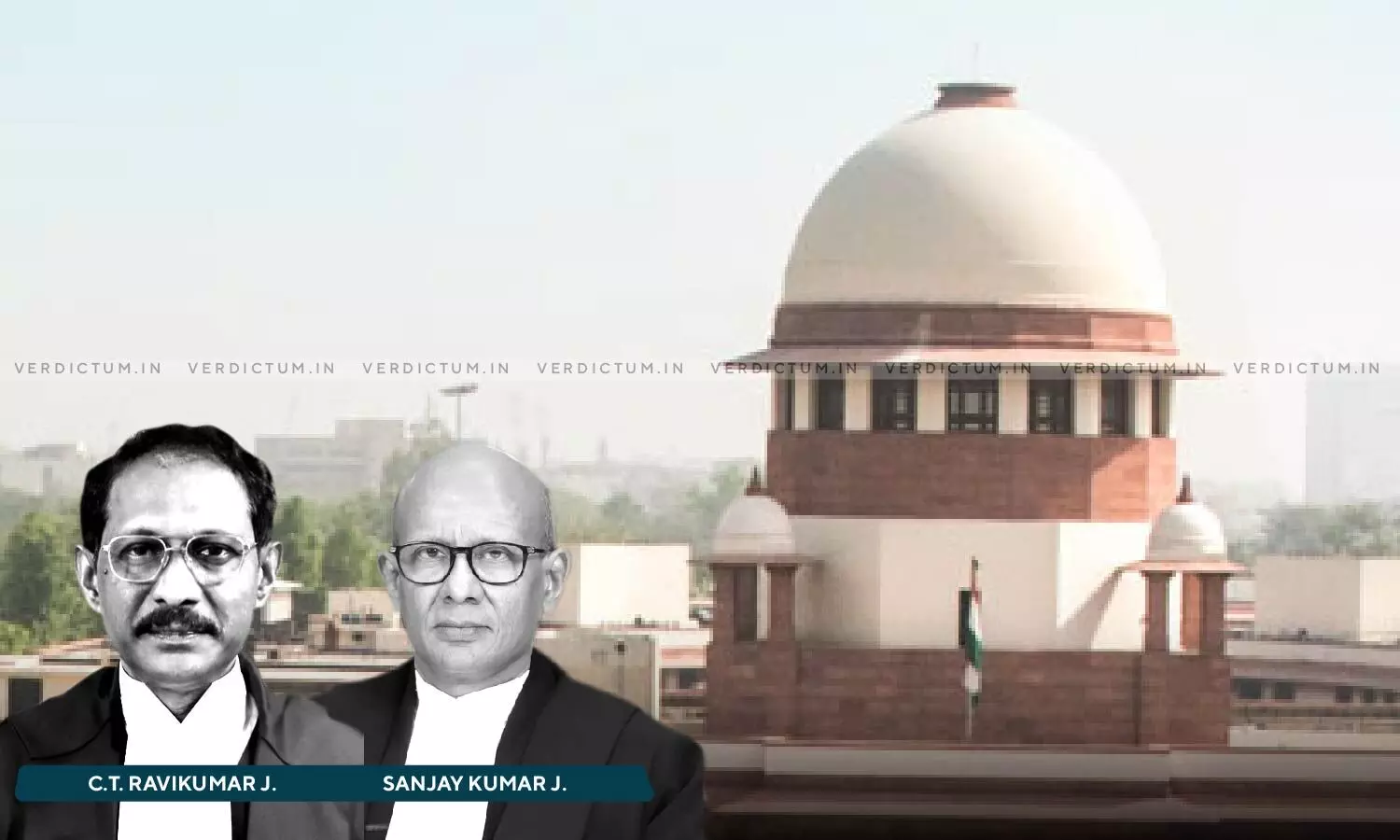
Stray Witness Deposition That He Saw Attesting Witness Sign The Will Not Enough To Meet Requirement U/S 69 Evidence Act: SC
 |
|The Supreme Court held that, for the purposes of Section 69 Evidence Act, it is not enough to merely examine a random witness who asserts that he saw the attesting witness affix signature in the Will.
The Court was deciding a property dispute in a civil appeal was filed against the judgment of the Andhra Pradesh High Court.
The two-Judge Bench comprising Justice C.T. Ravikumar and Justice Sanjay Kumar observed, “For the purposes of Section 69 of the Evidence Act, it is not enough to merely examine a random witness who asserts that he saw the attesting witness affix his signature in the Will. The very purpose and objective of insisting upon examination of at least one attesting witness to the Will would be entirely lost if such requirement is whittled down to just having a stray witness depose that he saw the attesting witness sign the Will.”
Advocate Y. Raja Gopala Rao appeared for the appellant while Senior Advocate Thomas P. Joseph appeared for the respondent.
In this case, the appellant, then a minor, claimed absolute right and title over the properties of the deceased woman under registered Will Deed dated May 3, 1982. It was also claimed that he was adopted by her, as evidenced by registered Adoption Deed dated April 20, 1982. The appellant was not even a year old at that time, as he was born in 1981 and a plea was filed by him, through his guardian, for declaratory and consequential reliefs in respect of the deceased’s properties.
The Principal Subordinate Judge, Srikakulam, held in the appellant’s favour, vide a judgment in 1989, and decreed the suit. However, in appeal, the High Court held against him, vide a judgment in 2006, and allowed the appeal filed by the deceased’s grandson through her deceased daughter. Being aggrieved by this, the appellant had approached the Apex Court.
The Supreme Court in view of the above facts noted, “The evidence of the scribe of the disputed Will (PW 6) also casts a doubt on the identity of the executant as he specifically stated that a woman was sitting at a distance but he could not tell whether she was Venkubayamma and he could not also tell whether Venkubayamma had signed the document. In effect, Ex. A10 Will was not proved in accordance with law and it can have no legal consequence. Nalini Kanth’s claim of absolute right and title over Venkubayamma’s properties on the strength thereof has, therefore, no legs to stand upon and is liable to be rejected.”
The Court said that various suspicious circumstances attached to the adoption ceremony of 1982 assume significance in the matter.
“Viewed in the backdrop of the above legal principles, as Ex. A9 Adoption Deed was registered, the presumption under Section 16 of the Act of 1956 attached to it and it was for Kaliprasad to rebut that presumption. We find that he did so more than sufficiently. … Though the High Court opined that the woman in Exs. A2 to A4 photographs was not Venkubayamma for the reason that Venkubayamma was a woman of advanced age and it was difficult to believe that she would have dyed her hair at that age, the same cannot be a deciding factor by itself”, further noted the Court.
The Court observed that the issue is not whether the deceased would have dyed her hair at the age of 70+ years but whether the dark-haired woman in the photographs was her at all.
“In this regard, as already noted above, it was not just the color of her hair that raised a question. Doubt arises, not only on that count, but even as to the age of the woman in the photographs, going by the witnesses’ depositions. PW 12 had stated that Venkubayamma was about 70 years of age in the year 1970 itself, whereas Exs. A9 and A10 record her age as 70 years in 1982. Either way, the woman in Exs. A2 to A4 did not look close to those ages. In effect, there is no clinching evidence to prove that the woman in the photographs was, in fact, Venkubayamma”, added the Court.
The actual ‘giving and taking’ of the child in adoption, being an essential requisite under Section 11(vi) of the Act of 1956, the Court found that there is no convincing evidence of that ‘act’ also in the case on hand and that there are no pictures of the actual ‘giving and taking’ of the child in adoption.
“In Exs. A2 and A3, the purohit (PW 7) is seen standing or sitting behind the others and the same cannot be taken to be during the ceremony of ‘giving and taking’, as he would have stood/sat in front of them, chanting mantras and incantations as per shastras”, noted the Court.
The Court further said that it is difficult to believe that a woman of such advanced years would willingly take on the responsibility of caring for an infant at that age and hence the adoption of the appellant is not proved in accordance with the law despite the registration of adoption deed.
“The very adoption, itself, is not believable, given the multitude of suspicious circumstances surrounding it. Nalini Kanth cannot, therefore, be treated as her heir by adoption”, concluded the Court.
Accordingly, the Apex Court dismissed the appeal and confirmed the judgment of the High Court.
Cause Title- Moturu Nalini Kanth v. Gainedi Kaliprasad (dead, through LRs.) (Neutral Citation: 2023 INSC 1004)